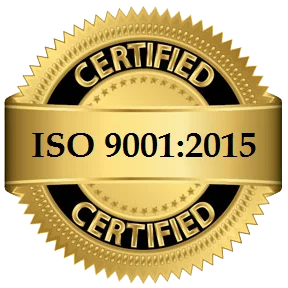 If the pandemic has taught us anything, it’s that we must find ways to adapt to unexpected change. Adapting to planned strategic change can also be a challenge. The advancement and management of this type of change within an organization is one of an executive’s most sought-after capabilities.
If the pandemic has taught us anything, it’s that we must find ways to adapt to unexpected change. Adapting to planned strategic change can also be a challenge. The advancement and management of this type of change within an organization is one of an executive’s most sought-after capabilities.
Realigning a management structure, swapping out a major software application, or recasting internal processes requires preparation and foresight. The strength or weakness of the planning and communication that paves the way for such new initiatives will determine their success or failure. Major roadblocks can be avoided if adequate explanation and justification is provided, and if the affected parties are sufficiently motivated to adopt the new methodology or circumstances.
Understanding why people embrace certain changes, while resisting others, is key. At the heart of this are two emotions that seem to have little to do with business but that still govern how we respond to our work experiences – love and fear. Technology is a perfect example. Today you may say, “I love the speed of our new internet service provider.” Tomorrow you may say, “I’m afraid this new accounting software will be a lot more difficult to use.” Fear of the unfamiliar is often a factor, as is the sense that something new may be more onerous, time-consuming, or otherwise detrimental.
A Framework for Successful Change
Having a framework in place to steer an organizational body through major adjustments enables managers to overcome any such negative expectations and be leaders of change rather than victims of it.
-
Scope the change
-
Be a change champion
-
Manage key stakeholders
-
Use change management tools
Scope the Change
Scoping the change is a matter of frank and open communication. Ultimately, you want buy-in from everyone involved in the upcoming change. That means presenting it in a positive way without glossing over how it will impact those within its scope. Nothing makes employees more resistant than a lack of understanding or the feeling that they have not been looped in.
Everyone affected must be told what the change is, when it will happen, who will be affected by it, how they will be affected, and why the change is taking place. And all of this should be expressed in realistic language that your associates can identify with. You want them to say, “I get it. This move makes sense.”
Be a Change Champion
Simply putting the information out there, however, won’t automatically get everyone on board. As the manager of a change effort, you’re the cheerleader and the chief influencer. It’s your job to generate enthusiasm by helping everyone visualize the benefits of the change. Beyond that, you want to build trust in the change by communicating an honest, compelling reason for it and by encouraging dialogue and answering questions to alleviate any misgivings. In other words, overcome the fear, and bring the love.
Manage Key Stakeholders
Every Change Champion needs a support team. Enlisting key stakeholders as additional influencers will strengthen your messaging efforts and expand their reach throughout your department, agency, or company. The first step is identifying those who are truly key stakeholders in the process. They might be department heads, functional leads, subject matter experts, contracting officers, or other types of supervisors. Next, it’s critical to understand how the change will impact these stakeholders and whether they have any resistance of their own to overcome. Finally, you’ll need strategies that will assist your team in supporting and advancing the change efforts.
Use Change Management Tools
It’s important to equip yourself with whatever tools you can devise to implement the change and track its progress. Use a spreadsheet to record the impacts and areas of resistance among each of your stakeholders along with the strategies you might use to modify their perceptions and boost their commitment. Create timelines to plot out your action items and roadmaps to predict best- and worst-case scenarios.
Ultimately, keep in mind that change needn’t be a disruptive force. Adopting the best practices of a Change Leader enables you to go beyond mitigating the impacts of a change. Your effective change management leadership will turn adopting change into a positive, transformational step forward for your organization, its personnel, and its operations.
About the Author: Jaime A. Ramirez, Vice President of Performance Excellence Partners (PEP), has been an Organization Effectiveness (OE) and Industrial & Organization (I/O) Psychology practitioner for his 20+ year career, and his work has included multiple Change Management and Leadership Development projects. He developed PEP’s Leading Change training, which he conducted for the Treasury Executive Institute in 2020. The two-hour virtual seminar teaches strategies for developing and implementing effective change management plans, mitigation efforts, and adoption strategies that address organizational change impacts.
To Learn More: please visit PEP’s trainings page or contact us. To be the first to receive our next blog post, please join our mailing list. You can download a copy of the PDF here.





